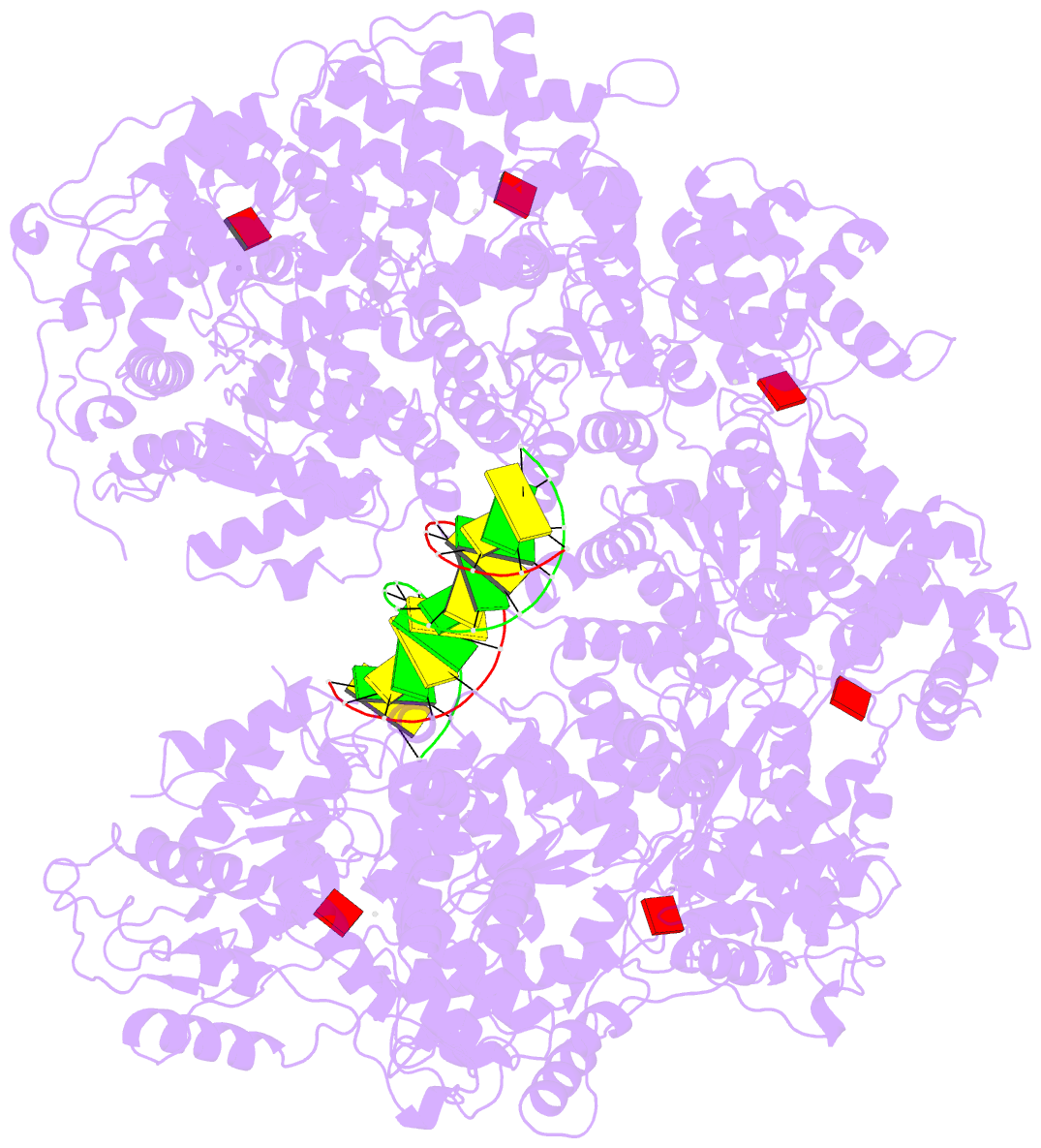Summary information and primary citation
- PDB-id
-
7mcs;
SNAP-derived features in text and
JSON formats
- Class
- DNA binding protein-DNA
- Method
- cryo-EM (3.56 Å)
- Summary
- Cryo-electron microscopy structure of tnsc(1-503)a225v
bound to DNA
- Reference
-
Shen Y, Gomez-Blanco J, Petassi MT, Peters JE, Ortega J,
Guarne A (2022): "Structural
basis for DNA targeting by the Tn7 transposon."
Nat.Struct.Mol.Biol., 29,
143-151. doi: 10.1038/s41594-022-00724-8.
- Abstract
- Tn7 transposable elements are unique for their highly
specific, and sometimes programmable, target-site selection
mechanisms and precise insertions. All the elements in the
Tn7 family utilize an AAA+ adaptor (TnsC) to coordinate
target-site selection with transpososome assembly and to
prevent insertions at sites already containing a Tn7
element. Owing to its multiple functions, TnsC is
considered the linchpin in the Tn7 element. Here we present
the high-resolution cryo-EM structure of TnsC bound to DNA
using a gain-of-function variant of the protein and a DNA
substrate that together recapitulate the recruitment to a
specific DNA target site. TnsC forms an asymmetric ring on
target DNA that segregates target-site selection and
interaction with the paired-end complex to opposite faces
of the ring. Unlike most AAA+ ATPases, TnsC uses a DNA
distortion to find the target site but does not remodel DNA
to activate transposition. By recognizing pre-distorted
substrates, TnsC creates a built-in regulatory mechanism
where ATP hydrolysis abolishes ring formation proximal to
an existing element. This work unveils how Tn7 and Tn7-like
elements determine the strict spacing between the target
and integration sites.





